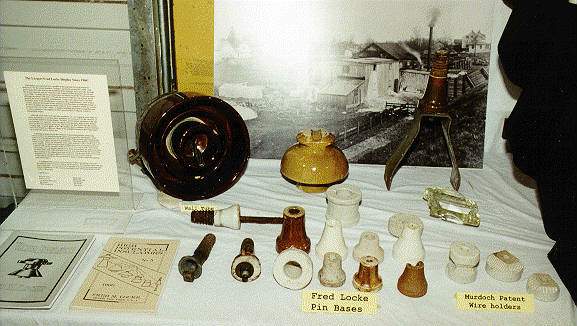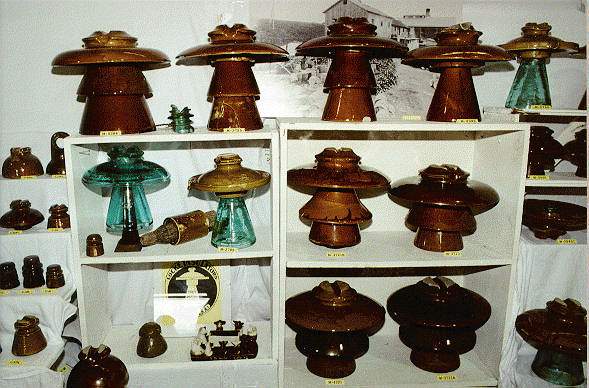
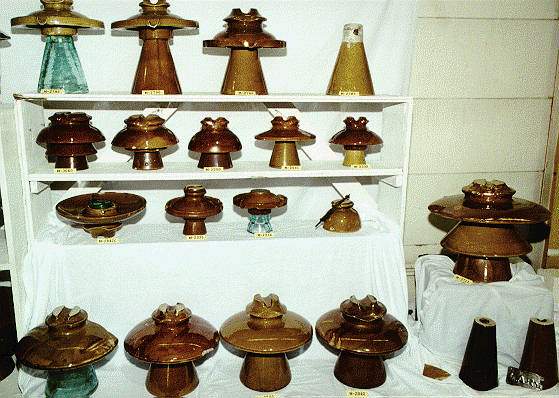
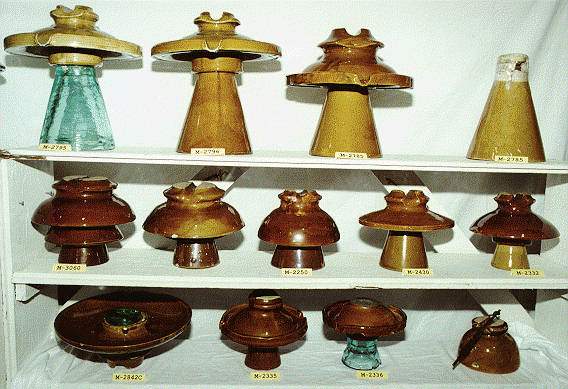
Enumclaw Show
NIA Western Regional Show
May 6-7, 2000
The Enumclaw, WA show was hosted by Vi Brown, and it was the 30th year for the show. It was a great show with hundreds of people attending. The huge hall at the fair grounds was filled with many dozens of tables. I thought some of you might like to see photographs of the Fred Locke display as well as the other great displays at the show. The Fred Locke display was the largest display of Fred Locke porcelain insulators since the 1904 Locke exhibit at the St. Louis electrical exhibition.
Robin Harrison
Mike Spadafora
Ed Sewall
Ben Kirsten
Gil Hedges-Blanquez
Howard Banks
Tim Wood
Elton Gish
Fred Locke Display
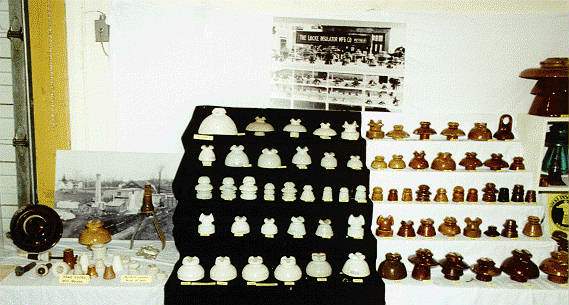
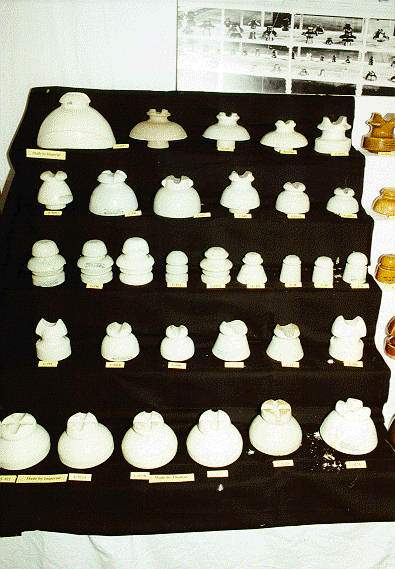
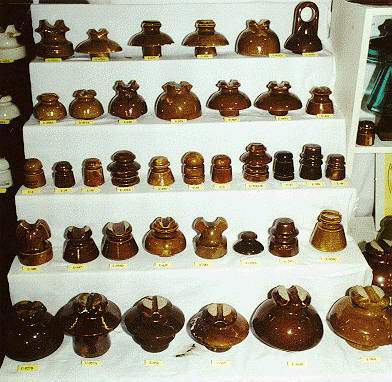



Note the all glass Locke 25 (CD 342) center left. Mike Spadafora found it and one other CD 342 last year in Colorado. Note the "Locke Model" on the bottom left . This was an experimental glazewelded insulator model fired at low temperature. It was probably made by Fred Locke just before the Victor, NY factory was built in the summer of 1898 and fired John Lapp's small kiln he constructed in his bicycle shop in Honeoye Falls, NY. It has a multi-date ink stamp on the surface of the glaze. Also note the "Locke Pigs" just to the right of the model. The pigs were presented to Fred Locke when he "retired" from the Victor factory in December 1904. Each of the nine pigs are different sizes and colors and represent each of the Locke board of directors sitting around the money feed trough. The thought is they were more interested in money than running an insulator factory. One of Fred Locke's granddaughters recalled playing with the pigs when she was a small girl.
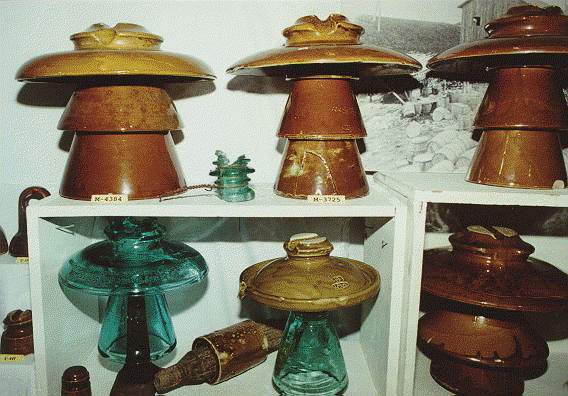
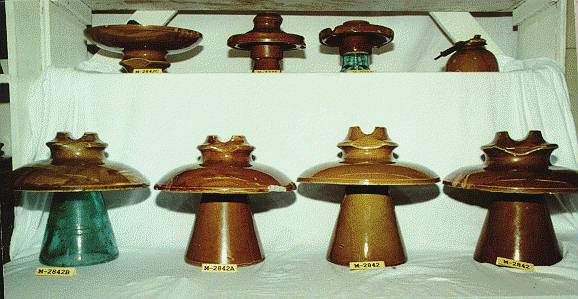
Note the various forms of M-2842. From left to right: M-2842B (glass bottom), M-2842A (small crown), M-2842 (normal crown), and M-2842D (large crown).
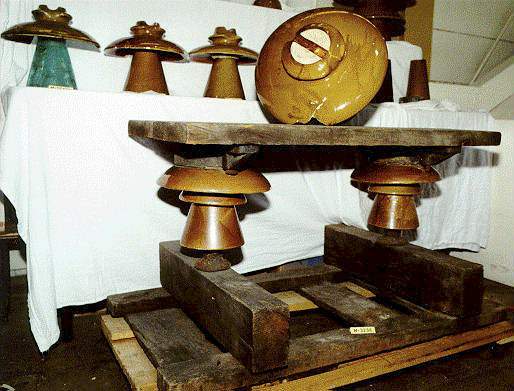
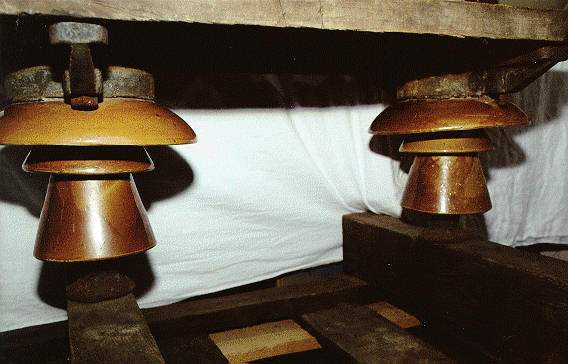

The insulated platform shown in the photographs below was found by Ben Kirsten. These are the only known examples of Fred Locke M-3236's. A heavy cast iron cap is cemented to each insulator to which the platform is bolted. The platform was probably used to support electrical equipment. Similar platforms were also used by switchmen. They would stand on the platform to insulate themselves from ground so they could safely throw a high-voltage switch.
